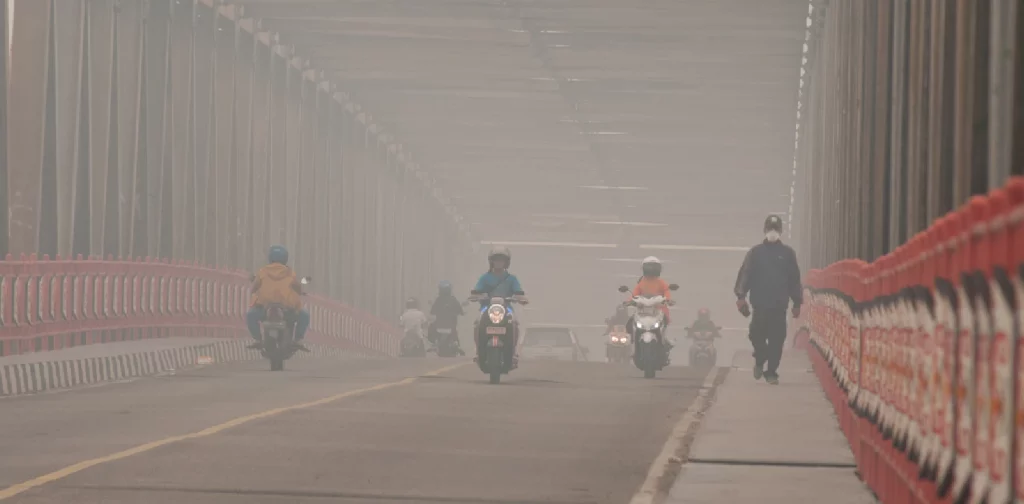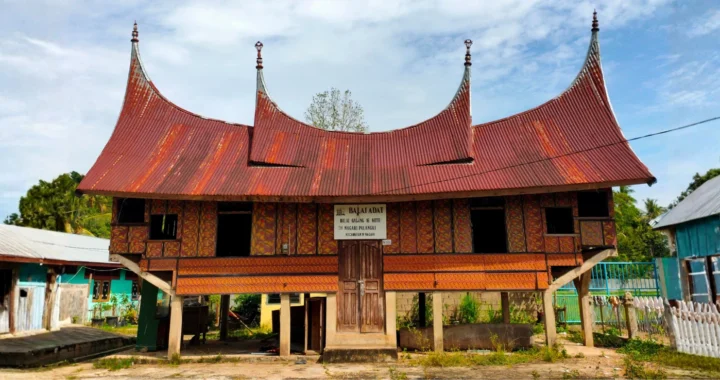Malaysia and Indonesia Struggle with Transboundary Haze in Southeast Asia

Haze in Central Kalimantan, Indonesia, 2015. | Photo: Aulia Erlangga/CIFOR on Flickr.
Air quality is deteriorating everywhere. Southeast Asia has been particularly struggling with air pollution in recent weeks, with the region’s air quality reaching unhealthy levels. The transboundary haze in Southeast Asia is a recurring problem, as haze in Malaysia and Indonesia seems to have become the region’s annual unwanted guest.
Transboundary Haze in Southeast Asia
Transboundary haze in Southeast Asia is primarily caused by peatland and forest fires. These fires not only destroy the forest ecosystems but also turn carbon storage into carbon emitters, contributing to global warming. Additionally, consisting of dust, moisture, and smoke, haze is extremely dangerous to human health.
Transboundary haze refers to haze with enough density to spread across national borders, and the region has been grappling with this issue since the 1980s. ASEAN Member States even signed a legally binding agreement to reduce haze pollution in 2022. Yet, the problem persists.
At the 43rd ASEAN Summit (September 5–7, 2023) in Jakarta, Indonesia, the ASEAN Coordinating Centre for Transboundary Haze Pollution Control (ACC THPC) was inaugurated to achieve the region’s commitment to be haze-free by 2030. Soon after, haze caused the air pollution index scores in Malaysia and Indonesia to spike to unhealthy levels.
The 2023 Haze in Malaysia and Indonesia
The ASEAN Specialized Meteorological Centre has recorded hundreds of hotspots in Sumatra and Borneo, Indonesia, mainly in South Sumatra and Central Kalimantan. The peatland and forest fires in these regions have led to a thick haze that limits eyesight and forces students to stay home.
This incident is not new. Almost every year during the dry season, fires burn in Indonesia to clear land for oil palm and pulp and paper plantations. Local, foreign, or foreign-listed companies in Indonesia are responsible.
Malaysia has sent a letter to Indonesia on the matter. Nik Nazmi, Malaysia’s Minister of Natural Resources, Environment, and Climate Change, said, “We submitted our letter to inform the Indonesian government and urge them to hopefully take action on the matter. We cannot keep going back to having haze as something normal.”
Meanwhile, Indonesia has denied causing the 2023 transboundary haze in Southeast Asia. “The fact is that there is no transboundary haze,” said Indonesian Environment and Forestry Minister Siti Nurbaya Bakar to the Associated Press.
Seeking Solutions
The Indonesian government has sealed off land owned by 11 companies allegedly causing land and forest fires in South Sumatra, with further legal action to be taken. Bakar explained, “We are still working to handle the forest and land fires in Borneo and Sumatra islands as well as possible. And the picture of the situation on the ground is getting better.”
Besides the rain-seeding efforts by the Malaysian and Indonesian governments, the Malaysian government has also called for collaborative action by the ASEAN to strengthen legislation to prevent haze. Nik Nazmi said, “I hope that every country will be able to be open in order to find a solution because the damage to the economy, to tourism, but especially to health, is immense from the haze.”

Join Green Network Asia Membership
If you find this content useful, support Green Network Asia’s movement to create positive impact for people and the planet through public education and multi-stakeholder advocacy on sustainability-related issues and sustainable development. Get exclusive benefits for personal and professional development as well as for organizational capacity development.
Become a Member Now

 An Interview with Eu Chin Fen, CEO of Frasers Hospitality
An Interview with Eu Chin Fen, CEO of Frasers Hospitality  The UK Government’s Funding Package Plan to Tackle Youth Unemployment
The UK Government’s Funding Package Plan to Tackle Youth Unemployment  Understanding the Dark Side of Artificial Intelligence
Understanding the Dark Side of Artificial Intelligence  Attempting Data Center Circularity Through Waste Heat Recovery
Attempting Data Center Circularity Through Waste Heat Recovery  Indigenous Knowledge and Art as Integral Instruments for Disaster Risk Reduction
Indigenous Knowledge and Art as Integral Instruments for Disaster Risk Reduction  Strengthening Societal Resilience in the Age of Disruptions
Strengthening Societal Resilience in the Age of Disruptions